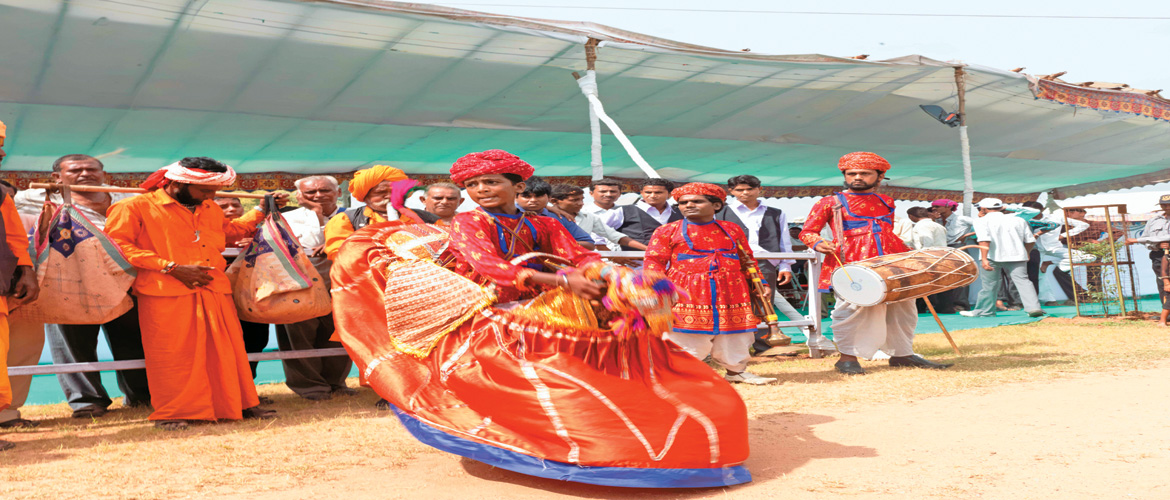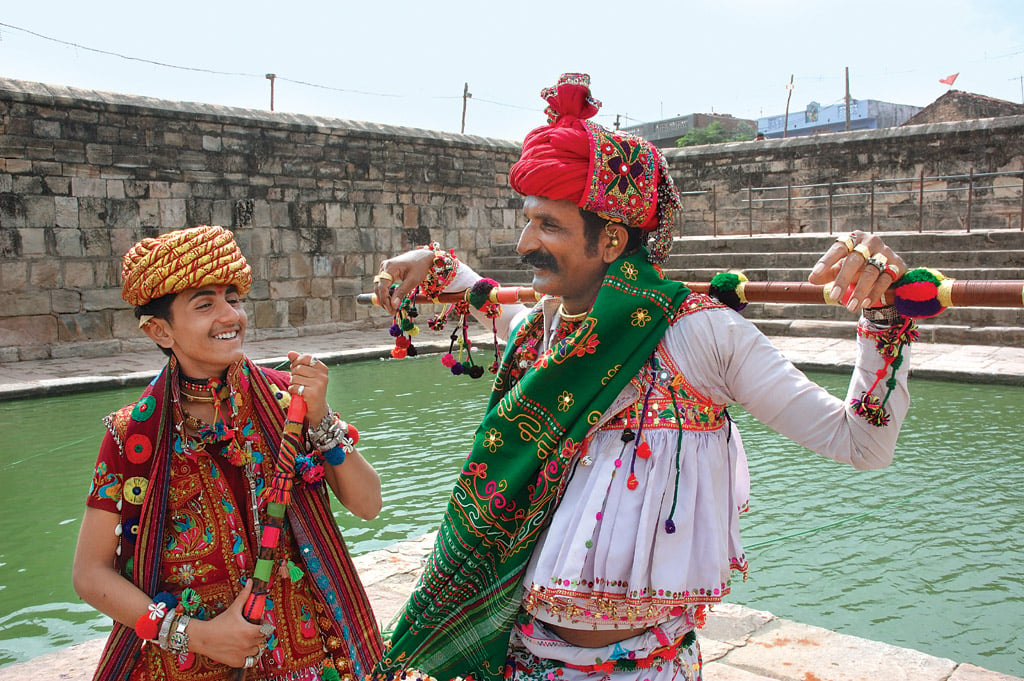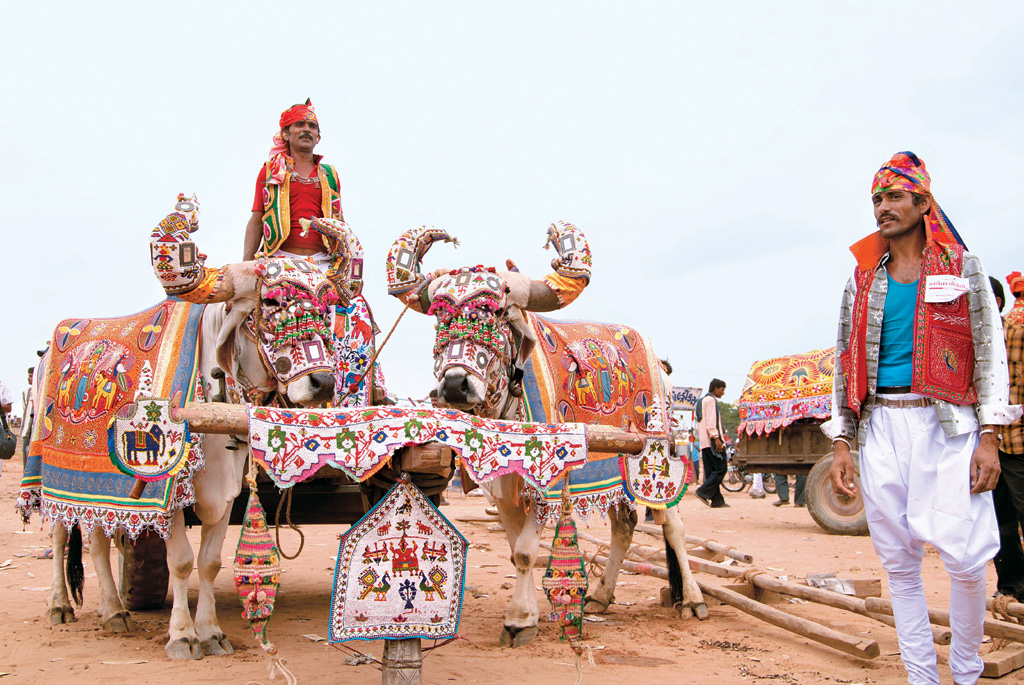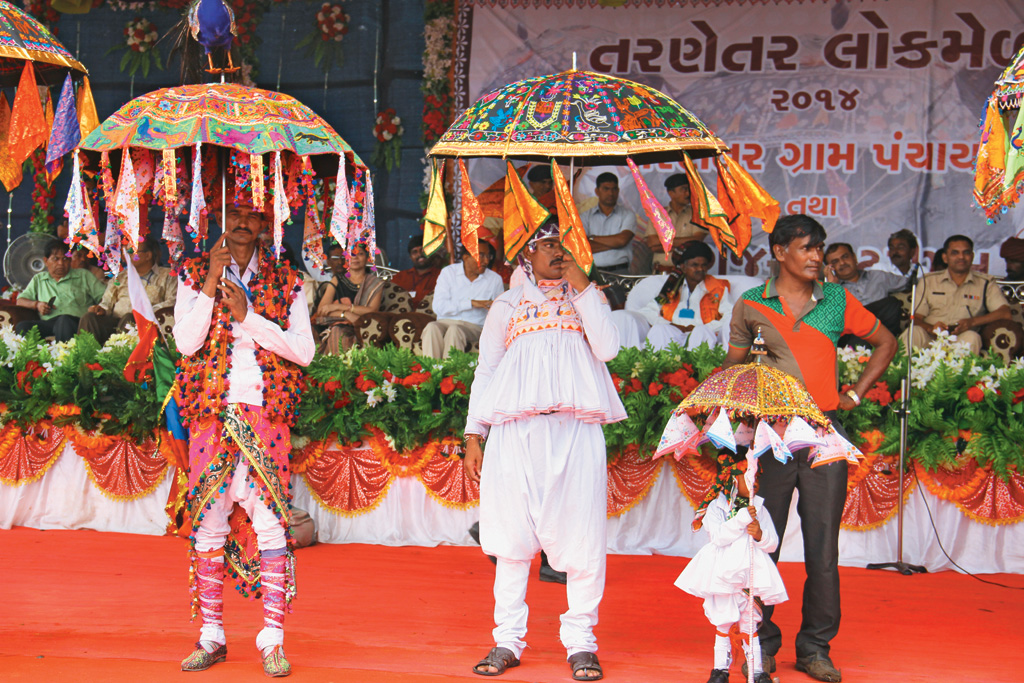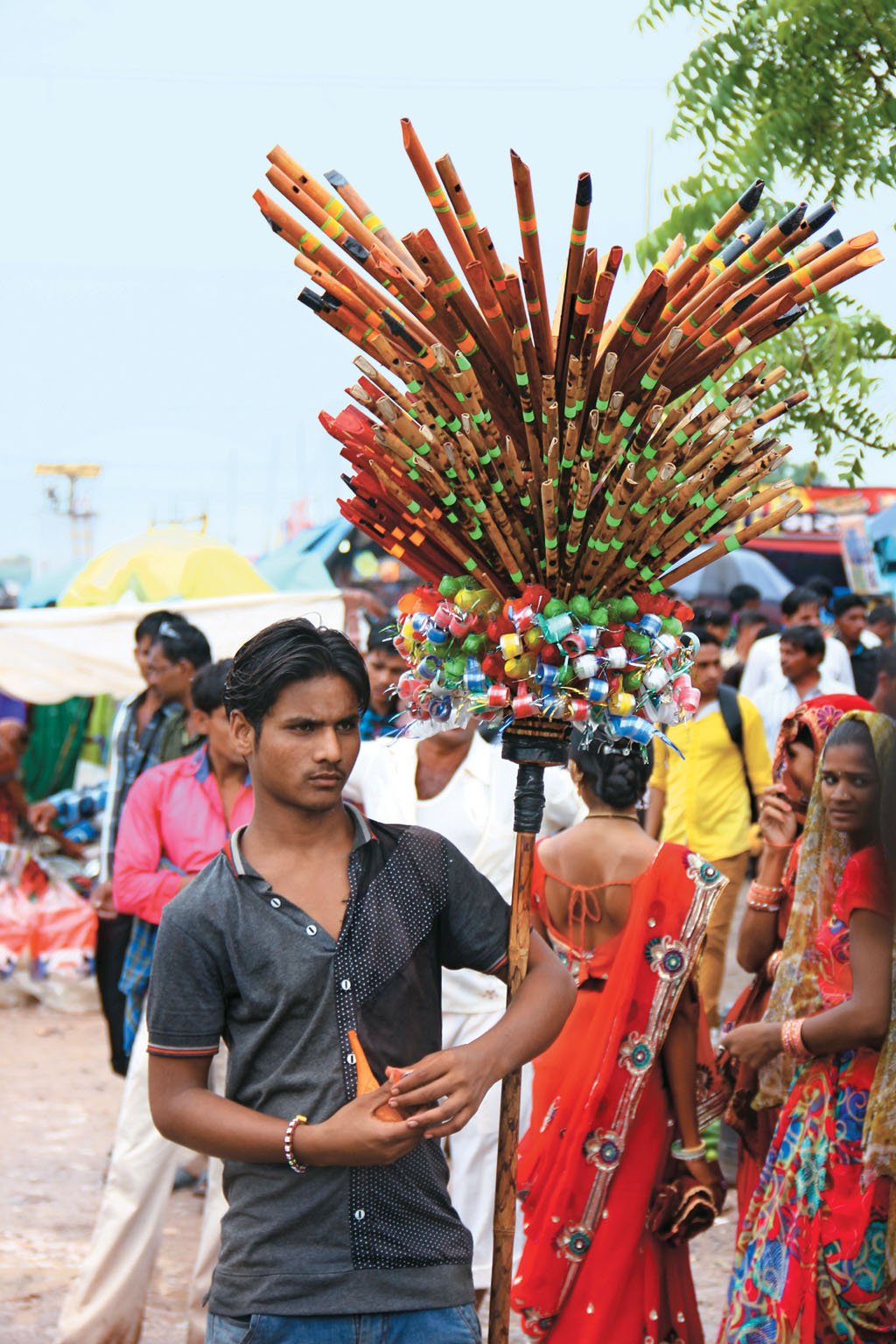Type Cultural Fair Time 3 Days In August/September Location Tarnetar, Gujarat In the monsoons, the otherwise non-descript village
The fair was initially the site of a courting tradition, where young men and women of nearby adivasi communities came to look for a spouse. Legend has it that the mela was inspired by the swayamvar (a ritual where a woman chooses a husband amongst many suitors) of the mythical heroine Draupadi. According to the Mahabharata, Arjuna, an unsurpassed archer, won over Draupadi by shooting the eye of a rotating fish despite only being able to see its reflection in water.
Leaving aside myths, the fair probably started around 200 to 250 years ago. Its locus is the temple of Triniteshwar Mahadev – the three-eyed god, which is another name for Shiva. Located on the banks of a rivulet, the temple opens into a reservoir. Locals believe that the place was once a part of the original course of the Ganga river and hence, bathing in the temple tank is considered as holy as a dip in the Ganga (even if the murky waters are less than inviting). During the fair, many ascetics and bhajan mandalis (ensembles which chant hymns) throng the precincts of the temple. The shrine is thought to have been originally constructed by the Solanki dynasty. It fell into ruins and was rebuilt by the Gaekwads of Baroda in the 19th century. Over the years, newer constructions have cropped up around the shrine.
- The many faces of the Tarnetar Mela
Today, the fair is held over three days, although it is best to visit on the first two days as things start wrapping up by the third. With more than 50,000 attendees, the mela has become a major destination, though visitors from other parts of India and abroad are still quite rare. The traditional aspects of the fair have now been completely supplanted by commercial ones and visitors hoping to experience a slice of adivasi life or the search for suitors will be disappointed. Nevertheless, you can still see the traditional attire and dance performances, albeit in the artificial setting of government-organised events and competitions.
Despite the severance from tradition, visiting the fair is an unparalleled experience. Thousands of people make long journeys to come to the village and amidst the crushing crowds, you can find daredevil circuses; young girls juggling daggers on a flimsy trapeze line; ‘wall of death’ stunts; performances bordering on the bizarre (‘headless girl’ and ‘girl turns into cobra’); magic shows (interspersed with titillating ‘dances’); snake charmers and dancing monkeys. During the fair, Tarnetar also becomes one large amusement park, with Ferris wheels, merry-go-rounds and other joyrides. Interestingly, there are many tattoo artists in the fair, who elaborately arrange their wares on the slushy ground and needle customers in full public view.

The embroidered umbrellas that the men carry to display their craftsmanship and attract potential brides have become emblematic of the fair. The Koli community of Saurashtra initiated the practice of embroidering umbrellas. The embroidery of each is unique and spans from the edges, all the way to the top. In addition, there are beadwork and patchwork ele-ments . Small, colourful handkerchiefs are tied to the edges. These umbrellas can be so huge and ornate that some men spend over a year embroidering them.
At the fair, you also get to see the many folk dances of the region. Raas, where dancers wielding sticks move in a circular fashion and strike their respective staffs to create a resounding beat, is one of the most popular dances of Gujarat. At times, as many as a hundred women cavort to the beats of four drums and the melody of jodia pavas (double flutes).
The Bharwads, a shepherd community, are known for the Hudo dance, which is usually performed at weddings. The dance is inspired from sheep fights, in which the animals lock their horns and ram their heads. A group of men or women in a circular formation sway to the sounds of dholak, harmonium, shehnai (oboe) and manjeera (cymbals). The Rabari women of Zalawad perform the Rabado dance. Interestingly, the colour of the women’s skirts traditionally signified their marital status – single women wear a red zimi (skirt), while married women wear a black skirt.
The fair holds many delights for shoppers too – local handicrafts, jewellery, wooden toys, earthernware and bric-a-bracs, which are quite different from what you get in the tourist-oriented markets of Ahmedabad and Bhuj. After enjoying the performance, rides and curios, conclude the trip at the makeshift studios (conveniently located next to the parking lot), where you can get your photos taken in traditional attire.
Tip While the fair offers multiple opportunities for unbridled fun, the swarming crowds, ankle-deep puddles, and earache-inducing din can quickly get overwhelming. There is no place to unwind and barely any toilets. If you find these bothersome, it’s best to schedule a short visit. As rains are quite likely, carry an umbrella and protective shoes.
Where to Stay & Eat
Gujarat Tourism puts up tents and huts during the fair. For bookings, contact the TCGL, Rajkot (Tel: 0281-2234507) or check their website W gujarattourism.com. Tariff ranges from
₹4,000–8,500 (rate in 2015) for a 2D/ 1N package for a couple, inclusive of all meals and local sightseeing. Chotila, the nearest transport hub, has many basic, run-down lodges and guesthouses. Rajkot, the nearest city has several hotels in all budget categories. You can also stay at one of the heritage hotels in Sayla (Bell Guest House), Muli (Ambika Niwas Palace), Khirasara (Khirasara Palace) or Wankaner.
There are hundreds of food stalls in Tarnetar, which sell Gujarati snacks, savouries and thalis. If you are particular about hygiene, carry packed lunch.
FAST FACTS
Tourist Office
Tourism Corporation of Gujarat Limited (TCGL)
Bhavnagar House
Behind State Bank of Saurashtra
Jawahar Road, Rajkot
Tel: 0281-2234507
STD code 0281
GETTING THERE
Air Rajkot Airport (75km/ 1.5hrs) is connected by direct flights from Delhi and Mumbai. Full-day return fare for a taxi is ₹2,500. Contact Deepak Travels in Rajkot (Cell: 09824208487; W deepaktravels.co.in) for tours to the fair
Rail Nearest railhead: Surendranagar Railway Station (95km/ 2hrs) is served by trains from Mumbai and Delhi. Good options from Delhi are Porbandar Express, Rajkot Weekly and Sarvodya Express. From Mumbai, opt for Rajkot Express or Saurashtra Express
Road GSRTC buses connect Surendranagar and Rajkot to most cities in the state. From Surendranagar/ Rajkot, take a bus to Chotila. Buses leave every 10 minutes from Chotila to Tarnetar during the mela.
festivals of India
Gujarat
September Festivals


